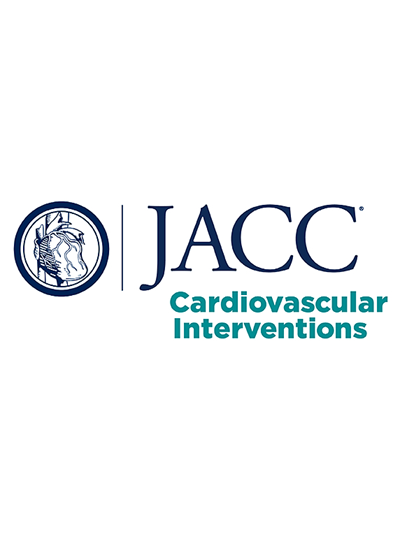Surgical vs Transcatheter Treatment in Patients With Coronary Artery Disease and Severe Aortic Stenosis
IF 11.7
1区 医学
Q1 CARDIAC & CARDIOVASCULAR SYSTEMS
引用次数: 0
Abstract
Background
Severe aortic stenosis (AS) coexists with coronary artery disease (CAD) in approximately 50% of patients. The preferred treatment is combined surgical aortic valve replacement (SAVR) and coronary artery bypass grafting (CABG). However, transcatheter aortic valve replacement (TAVR) along with percutaneous coronary intervention (PCI) has emerged as a viable alternative.
Objectives
This study sought to compare the outcomes of PCI + TAVR vs CABG + SAVR.
Methods
This national multicenter retrospective study in Spain involved patients with severe AS and CAD treated between 2018 and 2021. Patients underwent either PCI + TAVR or CABG + SAVR and were compared. The primary endpoint was all-cause mortality and stroke at 1 year. Propensity score analysis was performed to mitigate baseline differences.
Results
Of the 1,342 included patients, 625 (46.6%) underwent PCI + TAVR, and 713 (53.1%) underwent CABG + SAVR. Patients in the percutaneous arm were older (age 81.6 ± 5.8 years vs 72.1 ± 7 years; P < 0.001), had a higher prevalence of chronic kidney disease (40.6% vs 14.9%; P < 0.001), and had higher Society of Thoracic Surgeons risk scores (4.3% [interquartile range (Q1-Q3): 2.8-6.4] vs 2.2% [Q1-Q3: 1.4-3.3]; P < 0.001). Technical success rates were 96% for PCI + TAVR and 98.4% for CABG + SAVR (P = 0.008), with similar periprocedural mortality (0.8% vs 0.7%; P = 0.999). However, the mortality + stroke rate at 30 days was higher in the CABG + SAVR group compared with PCI + TAVR, both in the unmatched (12.2% vs 4.7%; P = 0.005) and matched cohorts (8.8% vs 4.5%; P = 0.002), persisting at the 1-year follow-up.
Conclusions
Despite a lower baseline risk, CABG + SAVR in patients with severe AS and CAD was associated with a higher rate of death and stroke compared with PCI + TAVR, highlighting the necessity for a large, randomized analysis.
冠状动脉疾病和严重主动脉瓣狭窄患者的手术治疗与经导管治疗的比较
背景:约有 50% 的患者同时患有严重的主动脉瓣狭窄 (AS) 和冠状动脉疾病 (CAD)。首选的治疗方法是外科主动脉瓣置换术(SAVR)和冠状动脉旁路移植术(CABG)。然而,经导管主动脉瓣置换术(TAVR)和经皮冠状动脉介入治疗(PCI)已成为一种可行的替代方法:本研究旨在比较 PCI + TAVR 与 CABG + SAVR 的疗效:这项西班牙全国多中心回顾性研究涉及在2018年至2021年间接受治疗的严重AS和CAD患者。患者接受了 PCI + TAVR 或 CABG + SAVR,并进行了比较。主要终点是1年内的全因死亡率和中风。为减少基线差异,进行了倾向评分分析:在纳入的 1342 例患者中,625 例(46.6%)接受了 PCI + TAVR,713 例(53.1%)接受了 CABG + SAVR。经皮治疗组的患者年龄更大(81.6 ± 5.8 岁 vs 72.1 ± 7 岁;P < 0.001),慢性肾脏病患病率更高(40.6% vs 14.9%;P < 0.001),胸外科医师协会风险评分更高(4.3% [四分位间范围(Q1-Q3):2.8-6.4] vs 2.2% [Q1-Q3:1.4-3.3];P < 0.001)。PCI+TAVR的技术成功率为96%,CABG+SAVR为98.4%(P = 0.008),围手术期死亡率相似(0.8% vs 0.7%;P = 0.999)。然而,与PCI + TAVR相比,CABG + SAVR组在30天内的死亡率+卒中率更高,无论是在未配对队列(12.2% vs 4.7%;P = 0.005)还是配对队列(8.8% vs 4.5%;P = 0.002)中都是如此,并且在1年随访中持续存在:尽管基线风险较低,但与 PCI + TAVR 相比,重度 AS 和 CAD 患者的 CABG + SAVR 与较高的死亡和卒中发生率相关,因此有必要进行大规模随机分析。
本文章由计算机程序翻译,如有差异,请以英文原文为准。
求助全文
约1分钟内获得全文
求助全文
来源期刊

JACC. Cardiovascular interventions
CARDIAC & CARDIOVASCULAR SYSTEMS-
CiteScore
11.60
自引率
8.80%
发文量
756
审稿时长
4-8 weeks
期刊介绍:
JACC: Cardiovascular Interventions is a specialist journal launched by the Journal of the American College of Cardiology (JACC). It covers the entire field of interventional cardiovascular medicine, including cardiac, peripheral, and cerebrovascular interventions. The journal publishes studies that will impact the practice of interventional cardiovascular medicine, including clinical trials, experimental studies, and in-depth discussions by respected experts. To enhance visual understanding, the journal is published both in print and electronically, utilizing the latest technologies.
 求助内容:
求助内容: 应助结果提醒方式:
应助结果提醒方式:


